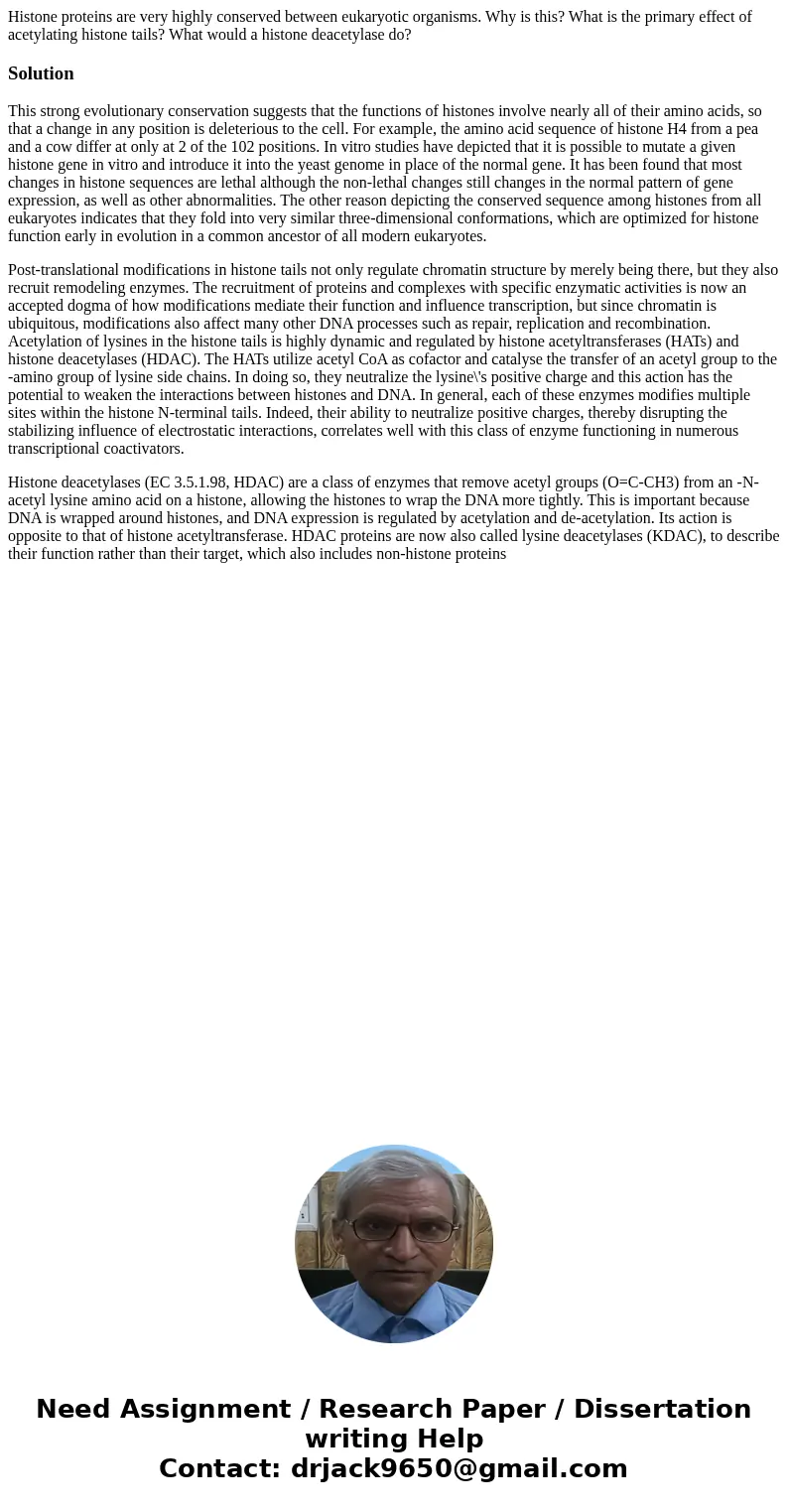Histone proteins are very highly conserved between eukaryoti
Histone proteins are very highly conserved between eukaryotic organisms. Why is this? What is the primary effect of acetylating histone tails? What would a histone deacetylase do?
Solution
This strong evolutionary conservation suggests that the functions of histones involve nearly all of their amino acids, so that a change in any position is deleterious to the cell. For example, the amino acid sequence of histone H4 from a pea and a cow differ at only at 2 of the 102 positions. In vitro studies have depicted that it is possible to mutate a given histone gene in vitro and introduce it into the yeast genome in place of the normal gene. It has been found that most changes in histone sequences are lethal although the non-lethal changes still changes in the normal pattern of gene expression, as well as other abnormalities. The other reason depicting the conserved sequence among histones from all eukaryotes indicates that they fold into very similar three-dimensional conformations, which are optimized for histone function early in evolution in a common ancestor of all modern eukaryotes.
Post-translational modifications in histone tails not only regulate chromatin structure by merely being there, but they also recruit remodeling enzymes. The recruitment of proteins and complexes with specific enzymatic activities is now an accepted dogma of how modifications mediate their function and influence transcription, but since chromatin is ubiquitous, modifications also affect many other DNA processes such as repair, replication and recombination. Acetylation of lysines in the histone tails is highly dynamic and regulated by histone acetyltransferases (HATs) and histone deacetylases (HDAC). The HATs utilize acetyl CoA as cofactor and catalyse the transfer of an acetyl group to the -amino group of lysine side chains. In doing so, they neutralize the lysine\'s positive charge and this action has the potential to weaken the interactions between histones and DNA. In general, each of these enzymes modifies multiple sites within the histone N-terminal tails. Indeed, their ability to neutralize positive charges, thereby disrupting the stabilizing influence of electrostatic interactions, correlates well with this class of enzyme functioning in numerous transcriptional coactivators.
Histone deacetylases (EC 3.5.1.98, HDAC) are a class of enzymes that remove acetyl groups (O=C-CH3) from an -N-acetyl lysine amino acid on a histone, allowing the histones to wrap the DNA more tightly. This is important because DNA is wrapped around histones, and DNA expression is regulated by acetylation and de-acetylation. Its action is opposite to that of histone acetyltransferase. HDAC proteins are now also called lysine deacetylases (KDAC), to describe their function rather than their target, which also includes non-histone proteins

 Homework Sourse
Homework Sourse